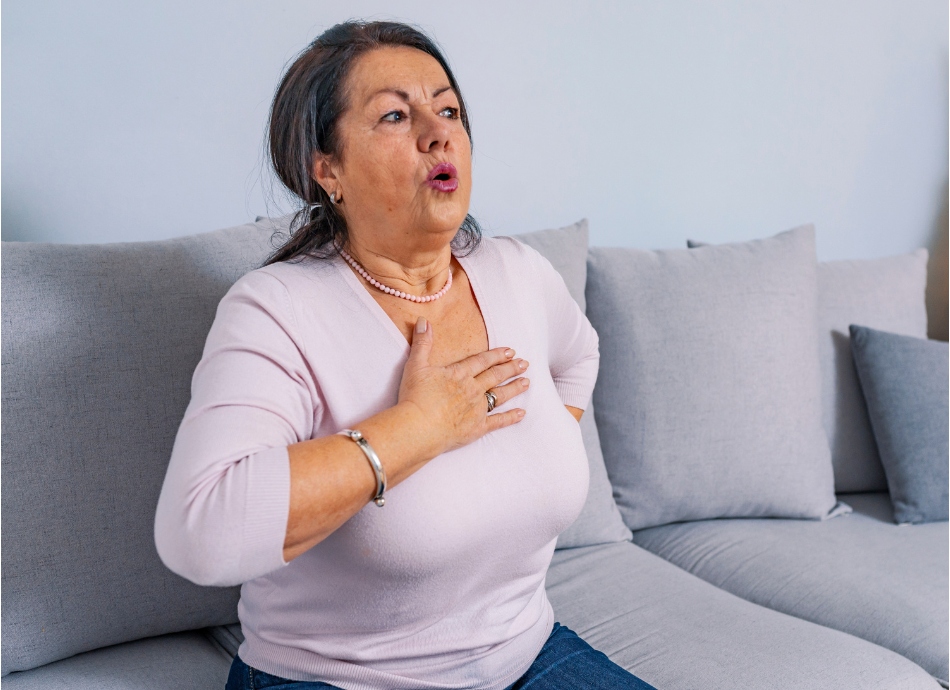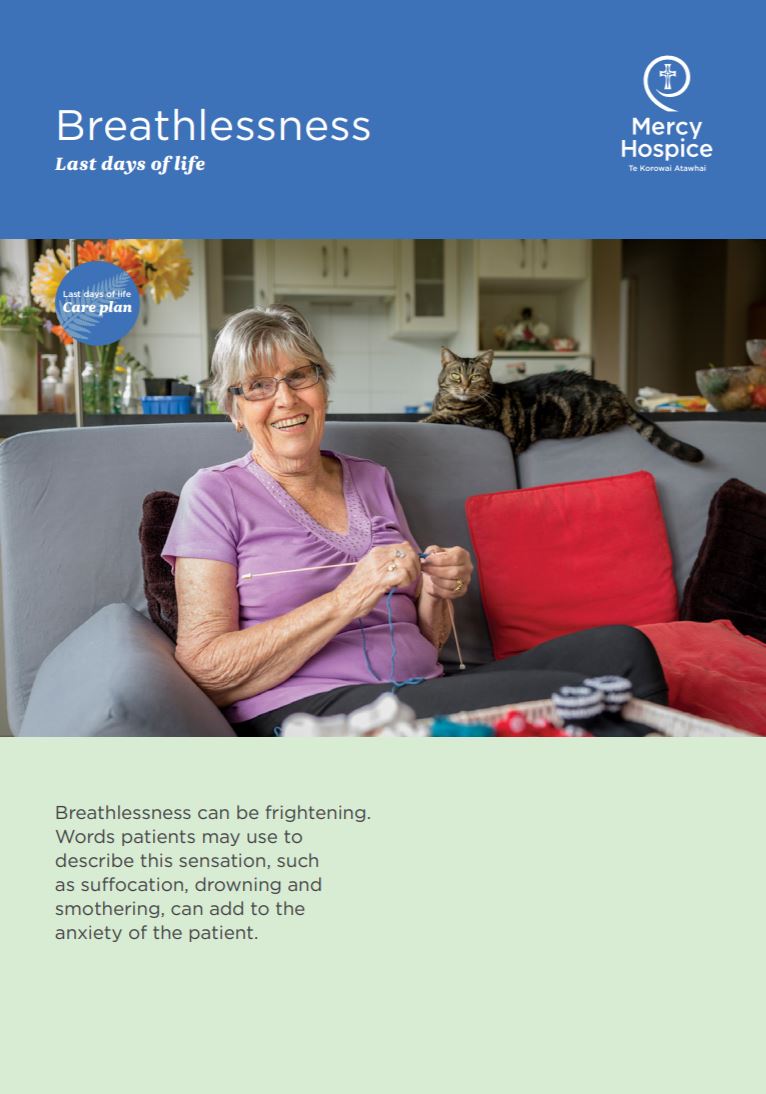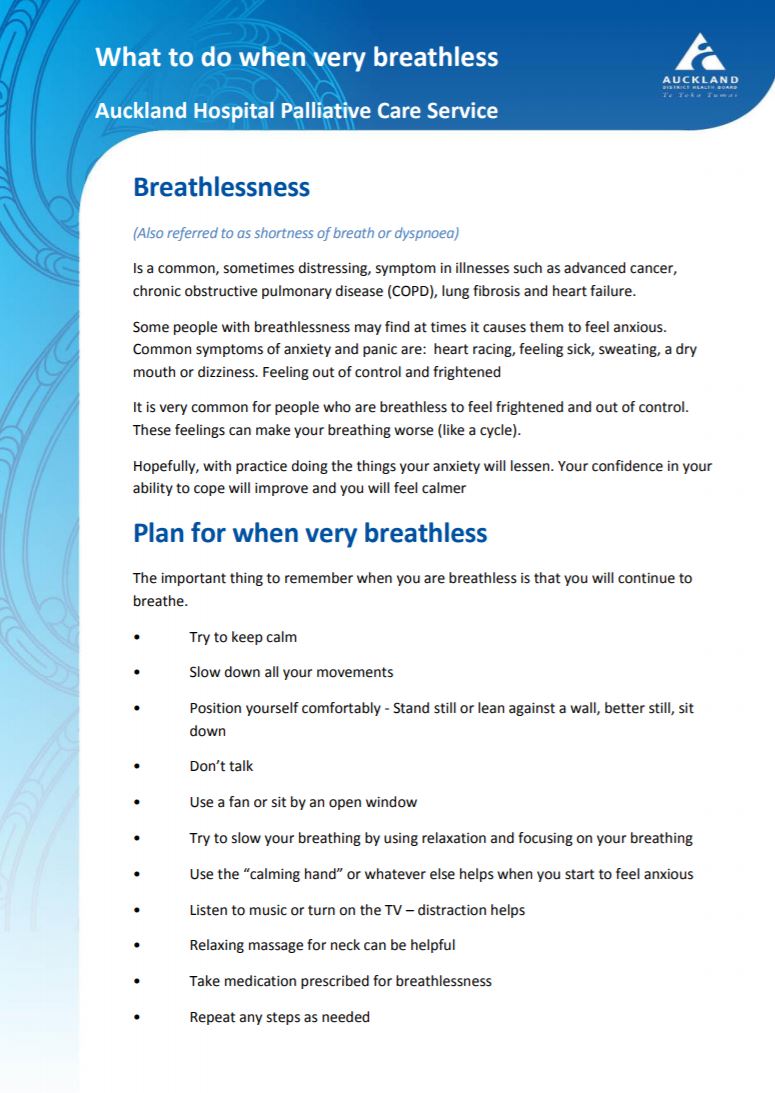There are many causes that can contribute to the feeling of being short of breath. It may come and go quickly (acute) or may come on slowly and last for a longer time (chronic).
It can be caused by the terminal illness you are living with, eg, lung cancer, or other medical conditions that happen at the same time. Breathlessness can also be caused by psychological factors such as anxiety and fear. Sometimes, it's not possible to find out an exact cause.
Common causes of breathlessness in patients living with a terminal illness include:
- cancer and its complications, such as pleural effusion, pulmonary embolism or airway obstruction
- conditions affecting your lungs, such as COPD
- heart conditions such as heart failure
- muscle weakness
- fatigue
- infection
- metabolic acidosis (your body makes too much acid)
- low blood count (anaemia)
- smoking
- pain
- anxiety and fear.









